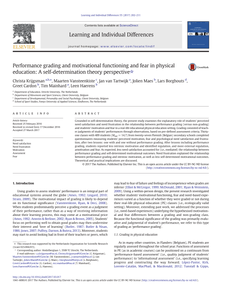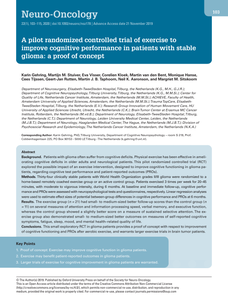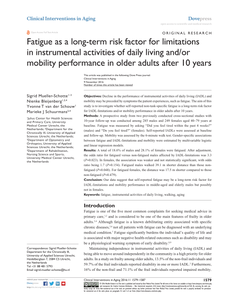This review paper investigates and presents generalized answers to the two basic questions of port governance, namely how to govern and for what purpose. The study is based on a total sample of 118 studies on port governance. The results from the analysis of these studies show that port devolution and port re-centralization are the main governance tools at the institutional level. At the strategical level, the main governance tools are port co-opetition, port regionalization, port integration, stakeholder management strategy, and corporate governance. While at the managerial level, the main governance tools are port pricing, port concession, port user/customer relationship management, monitoring and measuring, regulatory control, port security management, and information and communication technologies. The institutional governance tools are generally used by governmental organizations to set the fundamental regulative rules for the port governance system, while strategical tools are applied by port organizations in gaining competitive advantages and increasing market share in the long term. Managerial tools are related to the port business operations and management. Furthermore, The study clearly shows that the main objective of port governance is the improvement of port efficiency and port effectiveness. However, the choice of efficiency-oriented or effectiveness-oriented configuration is largely determined by the port organization's external operating environment, strategies and structures.
DOCUMENT
Change has become continuous, and innovation is a primary approach for hospitality, i.e., hotel companies, to become or remain economically viable and sustainable. An increasing number of management researchers are paying more attention to workplace rather than technological innovation. This study investigates workplace innovation in the Dutch hotel industry, in three- and four-star hotels in the Netherlands, by comparing them to other industries. Two samples were questioned using the Workplace Innovation survey created by the Dutch Network of Social Innovation (NSI). The first was conducted in the hospitality industry, and these data were compared with data collected in a sample of other industries. Results suggest that greater strategic orientation on workplace innovation and talent development has a positive influence on four factors of organizational performance. Greater internal rates of change, the ability to self-organize, and investment in knowledge also had positive influences on three of the factors—growth in revenue, sustainability, and absenteeism. Results also suggest that the hospitality industry has lower workplace innovation than other industries. However, no recent research has assessed to what degree the hospitality industry fosters workplace innovation, especially in the Netherlands. Next to that, only few studies have examined management in the Dutch hotel industry, how workplace innovation is used there, and whether it improves practices.
DOCUMENT

Big data analytics received much attention in the last decade and is viewed as one of the next most important strategic resources for organizations. Yet, the role of employees' data literacy seems to be neglected in current literature. The aim of this study is twofold: (1) it develops data literacy as an organization competency by identifying its dimensions and measurement, and (2) it examines the relationship between data literacy and governmental performance (internal and external). Using data from a survey of 120 Dutch governmental agencies, the proposed model was tested using PLS-SEM. The results empirically support the suggested theoretical framework and corresponding measurement instrument. The results partially support the relationship of data literacy with performance as a significant effect of data literacy on internal performance. However, counter-intuitively, this significant effect is not found in relation to external performance.
MULTIFILE

Grounded in self-determination theory, the present study examines the explanatory role of students' perceived need satisfaction and need frustration in the relationship between performance grading (versus non-grading) and students' motivation and fear in a real-life educational physical education setting. Grading consisted of teacher judgments of students' performances through observations, based on pre-defined assessment criteria. Thirty-one classes with 409 students (Mage = 14.7) from twenty-seven Flemish (Belgian) secondary schools completed questionnaires measuring students' perceived motivation, fear and psychological need satisfaction and frustration, after two lessons: one with and one without performance grading. After lessons including performance grading, students reported less intrinsic motivation and identified regulation, and more external regulation, amotivation and fear. As expected, less need satisfaction accounted for (i.e., mediated) the relationship between performance grading and self-determined motivational outcomes. Need frustration explained the relationship between performance grading and intrinsic motivation, as well as less self-determined motivational outcomes. Theoretical and practical implications are discussed.
DOCUMENT

Background: Early identification of older cardiac patients at high risk of readmission or mortality facilitates targeted deployment of preventive interventions. In the Netherlands, the frailty tool of the Dutch Safety Management System (DSMS-tool) consists of (the risk of) delirium, falling, functional impairment, and malnutrition and is currently used in all older hospitalised patients. However, its predictive performance in older cardiac patients is unknown. Aim: To estimate the performance of the DSMS-tool alone and combined with other predictors in predicting hospital readmission or mortality within 6 months in acutely hospitalised older cardiac patients. Methods: An individual patient data meta-analysis was performed on 529 acutely hospitalised cardiac patients ≥70 years from four prospective cohorts. Missing values for predictor and outcome variables were multiply imputed. We explored discrimination and calibration of: (1) the DSMS-tool alone; (2) the four components of the DSMS-tool and adding easily obtainable clinical predictors; (3) the four components of the DSMS-tool and more difficult to obtain predictors. Predictors in model 2 and 3 were selected using backward selection using a threshold of p = 0.157. We used shrunk c-statistics, calibration plots, regression slopes and Hosmer-Lemeshow p-values (PHL) to describe predictive performance in terms of discrimination and calibration. Results: The population mean age was 82 years, 52% were males and 51% were admitted for heart failure. DSMS-tool was positive in 45% for delirium, 41% for falling, 37% for functional impairments and 29% for malnutrition. The incidence of hospital readmission or mortality gradually increased from 37 to 60% with increasing DSMS scores. Overall, the DSMS-tool discriminated limited (c-statistic 0.61, 95% 0.56-0.66). The final model included the DSMS-tool, diagnosis at admission and Charlson Comorbidity Index and had a c-statistic of 0.69 (95% 0.63-0.73; PHL was 0.658). Discussion: The DSMS-tool alone has limited capacity to accurately estimate the risk of readmission or mortality in hospitalised older cardiac patients. Adding disease-specific risk factor information to the DSMS-tool resulted in a moderately performing model. To optimise the early identification of older hospitalised cardiac patients at high risk, the combination of geriatric and disease-specific predictors should be further explored.
DOCUMENT

The aim of this explorative study was to determine the key inertial measurement unit-based wheelchair mobility performance components during a wheelchair tennis match. A total of 64 wheelchair tennis matches were played by 15 wheelchair tennis players (6 women, 5 men, 4 juniors). All individual tennis wheelchairs were instrumented with inertial measurement units, two on the axes of the wheels and one on the frame. A total of 48 potentially relevant wheelchair tennis outcome variables were initially extracted from the sensor signals, based on previous wheelchair sports research and the input of wheelchair tennis experts (coaches, embedded scientists). A principal component analysis was used to reduce this set of variables to the most relevant outcomes for wheelchair tennis mobility. Results showed that wheelchair mobility performance in wheelchair tennis can be described by six components: rotations to racket side in (1) curves and (2) turns; (3) linear accelerations; (4) rotations to non-racket side in (4) turns and (5) curves; and finally, (6) linear velocities. One or two outcome variables per component were selected to allow an easier interpretation of results. These key outcome variables can be used to adequately describe the wheelchair mobility performance aspect of wheelchair tennis during a wheelchair tennis match and can be monitored during training.
DOCUMENT

Paperbijdrage conferentie EARLI SIG 14, 11-14 september 2018, Genève Although professional performance at the workplace is essential in VET, little is known about what educators do when assessing students’ performance. This study aims to explore how workplace educators inform their judgements of students’ performance by looking at strategies and potentially influencing factors.
DOCUMENT

Background: Medically unexplained physical symptoms (MUPS) are a leading cause of reduced work functioning. It is not known which factors are associated with reduced work functioning in people with moderate MUPS. Insight in these factors can contribute to prevention of reduced work functioning, associated work-related costs and in MUPS becoming chronic. Therefore, the aim of this study was to identify which demographic and health-related factors are associated with reduced work functioning, operationalized as impaired work performance and absenteeism, in people with moderate MUPS. Methods: Data of 104 participants from an ongoing study on people with moderate MUPS were used in this cross-sectional study. Ten independent variables were measured at baseline to determine their association with reduced work functioning: severity of psychosocial symptoms (four domains, measured with the Four-Dimensional Symptom Questionnaire), physical health (RAND 36-Item Health Survey), moderate or vigorous physical activity (Activ8 activity monitor), age, sex, education level and duration of complaints. Two separate multivariable linear regression analyses were performed with backward stepwise selection, for both impaired work performance and absenteeism. Results: Absenteeism rate rose with 2.5 and 0.6% for every increased point on the Four-Dimensional Symptom Questionnaire for domain 'depression' (B = 0.025, SE = 0.009, p = .006) and domain 'somatization' (B = 0.006, SE = 0.003, p = .086), respectively. An R2 value of 0.118 was found. Impaired work performance rate rose with 0.2 and 0.5% for every increased point on the Four-Dimensional Symptom Questionnaire for domain 'distress' (B = 0.002, SE = 0.001, p = .084) and domain 'somatization' (B = 0.005, SE = 0.001, p < .001), respectively. An R2 value of 0.252 was found. Conclusions: Severity of distress, probability of a depressive disorder and probability of somatization are positively associated with higher rates of reduced work functioning in people with moderate MUPS. To prevent long-term absenteeism and highly impaired work performance severity of psychosocial symptoms seem to play a significant role. However, because of the low percentage of explained variance, additional research is necessary to gain insight in other factors that might explain the variance in reduced work functioning even better.
DOCUMENT

Abstract Background: Patients with glioma often suffer from cognitive deficits. Physical exercise has been effective in ameliorating cognitive deficits in older adults and neurological patients. This pilot randomized controlled trial (RCT) explored the possible impact of an exercise intervention, designed to improve cognitive functioning in glioma patients, regarding cognitive test performance and patient-reported outcomes (PROs). Methods: Thirty-four clinically stable patients with World Health Organization grades II/III glioma were randomized to a home-based remotely coached exercise group or an active control group. Patients exercised 3 times per week for 20-45 minutes, with moderate to vigorous intensity, during 6 months. At baseline and immediate follow-up, cognitive performance and PROs were assessed with neuropsychological tests and questionnaires, respectively. Linear regression analyses were used to estimate effect sizes of potential between-group differences in cognitive performance and PROs at 6 months. Results: The exercise group (n = 21) had small- to medium-sized better follow-up scores than the control group (n = 11) on several measures of attention and information processing speed, verbal memory, and executive function, whereas the control group showed a slightly better score on a measure of sustained selective attention. The exercise group also demonstrated small- to medium-sized better outcomes on measures of self-reported cognitive symptoms, fatigue, sleep, mood, and mental health-related quality of life. Conclusions: This small exploratory RCT in glioma patients provides a proof of concept with respect to improvement of cognitive functioning and PROs after aerobic exercise, and warrants larger exercise trials in brain tumor patients.
DOCUMENT

Objectives: Decline in the performance of instrumental activities of daily living (IADL) and mobility may be preceded by symptoms the patient experiences, such as fatigue. The aim of this study is to investigate whether self-reported non-task-specific fatigue is a long-term risk factor for IADL-limitations and/or mobility performance in older adults after 10 years. Methods: A prospective study from two previously conducted cross-sectional studies with 10-year follow-up was conducted among 285 males and 249 females aged 40–79 years at baseline. Fatigue was measured by asking “Did you feel tired within the past 4 weeks?” (males) and “Do you feel tired?” (females). Self-reported IADLs were assessed at baseline and follow-up. Mobility was assessed by the 6-minute walk test. Gender-specific associations between fatigue and IADL-limitations and mobility were estimated by multivariable logistic and linear regression models. Results: A total of 18.6% of males and 28.1% of females were fatigued. After adjustment, the odds ratio for fatigued versus non-fatigued males affected by IADL-limitations was 3.3 (P=0.023). In females, the association was weaker and not statistically significant, with odds ratio being 1.7 (P=0.154). Fatigued males walked 39.1 m shorter distance than those non-fatigued (P=0.048). For fatigued females, the distance was 17.5 m shorter compared to those non-fatigued (P=0.479). Conclusion: Our data suggest that self-reported fatigue may be a long-term risk factor for IADL-limitations and mobility performance in middle-aged and elderly males but possibly not in females.
DOCUMENT
